
Tasks for 3.MD.5
- Subject:
- Mathematics
- Material Type:
- Formative Assessment
- Author:
- Drew Polly
- Date Added:
- 07/12/2020

Tasks for 3.MD.5

Tasks for 3.MD.7

Tasks for 3.MD.8
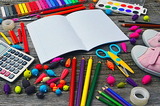
Next Steps document for intervention, MTSS, RTI, reteaching, and enrichment.

Number talks and math routines for Grade 3 Area and Perimeter.

Purpose: Engages students and introduces the element of a lemonade stand needed for building a lemonade stand and creating a business.
Case Overview
In “Lemonade Stand Fundraiser”, students will take the role of lemonade stand designer and business owner responding to a request to raise money for an overnight field trip. They will learn about adding, subtracting, multiplying and dividing decimals, adding and subtracting fractions, and finding the area of a rectangle with fractional lengths as they create their lemonade stand, advertise and start their fundraising business.
***NOTE
This PBL was created before NC adopted it's NC standards. NF.2 and NF.6 are no longer Grade 5 standards but incorporated into other NF standards.

Grade 6 Module 5: Area, Surface Area, and Volume Problems. Contains 19 Lessons.

Students can learn to visualize the effects of multiplying a fixed positive number by positive numbers greater than 1 and less than 1 with this tool. Using interactive figures, students can investigate how changing the height of a rectangle with a fixed width changes its area. e-Math Investigations are selected e-examples from the electronic version of the Principles and Standards of School Mathematics (PSSM). The e-examples are part of the electronic version of the PSSM document. Given their interactive nature and focused discussion tied to the PSSM document, the e-examples are natural companions to the i-Math investigations.

Four full-year digital course, built from the ground up and fully-aligned to the Common Core State Standards, for 7th grade Mathematics. Created using research-based approaches to teaching and learning, the Open Access Common Core Course for Mathematics is designed with student-centered learning in mind, including activities for students to develop valuable 21st century skills and academic mindset.

Algebraic Reasoning
Type of Unit: Concept
Prior Knowledge
Students should be able to:
Add, subtract, multiply, and divide rational numbers.
Evaluate expressions for a value of a variable.
Use the distributive property to generate equivalent expressions including combining like terms.
Understand solving an equation or inequality as a process of answering a question: which values from a specified set, if any, make the equation or inequality true?
Write and solve equations of the form x+p=q and px=q for cases in which p, q, and x are non-negative rational numbers.
Understand and graph solutions to inequalities x<c or x>c.
Use equations, tables, and graphs to represent the relationship between two variables.
Relate fractions, decimals, and percents.
Solve percent problems included those involving percent of increase or percent of decrease.
Lesson Flow
This unit covers all of the Common Core State Standards for Expressions and Equations in Grade 7. Students extend what they learned in Grade 6 about evaluating expressions and using properties to write equivalent expressions. They write, evaluate, and simplify expressions that now contain both positive and negative rational numbers. They write algebraic expressions for problem situations and discuss how different equivalent expressions can be used to represent different ways of solving the same problem. They make connections between various forms of rational numbers. Students apply what they learned in Grade 6 about solving equations such as x+2=6 or 3x=12 to solving equations such as 3x+6=12 and 3(x−2)=12. Students solve these equations using formal algebraic methods. The numbers in these equations can now be rational numbers. They use estimation and mental math to estimate solutions. They learn how solving linear inequalities differs from solving linear equations and then they solve and graph linear inequalities such as −3x+4<12. Students use inequalities to solve real-world problems, solving the problem first by arithmetic and then by writing and solving an inequality. They see that the solution of the algebraic inequality may differ from the solution to the problem.
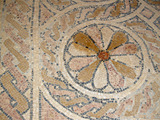
Students write expressions for geometric situations. They examine how different equivalent expressions can show different ways of thinking about the same problem.Key ConceptsStudents use their previous knowledge of how to find the perimeter and area of squares and rectangles. They write algebraic expressions for the perimeter and area of geometric figures. They examine how equivalent expressions, used to represent a problem situation, give clues to the approach the writer of the expression used to solve the problem. In the Challenge Problem, they use the distributive property to find the solution.ELL: For ELLs, access prior knowledge by writing the words area and perimeter on the board. Have students create concept maps associated with area and perimeter. Record students' responses on large poster paper that you can display in the room. The goal is to generate a list of words that students can use as a reference.Goals and Learning ObjectivesAccess prior knowledge of how to find the perimeter and area of squares and rectangles.Write algebraic expressions for finding perimeter or area of figures.Identify equivalent expressions.

Constructions and Angles
Unit Overview
Type of Unit: Concept
Prior Knowledge
Students should be able to:
Use a protractor and ruler.
Identify different types of triangles and quadrilaterals and their characteristics.
Lesson Flow
After an initial exploratory lesson involving a paper folding activity that gets students thinking in general about angles and figures in a context, the unit is divided into two concept development sections. The first section focuses on types of angles—adjacent, supplementary, complementary, and vertical—and how they are manifested in quadrilaterals. The second section looks at triangles and their properties, including the angle sum, and how this affects other figures.
In the first set of conceptual lessons, students explore different types of angles and where the types of angles appear in quadrilaterals. Students fold paper and observe the angles formed, draw given angles, and explore interactive sketches that test many cases. Students use a protractor and ruler to draw parallelograms with given properties. They explore sketches of parallelograms with specific properties, such as perpendicular diagonals. After concluding the investigation of the angle types, students move on to the next set.
In the second set of conceptual development lessons, students focus on triangles. Students again fold paper to create figures and certain angles, such as complementary angles.
Students draw, using a protractor and ruler, other triangles with given properties. Students then explore triangles with certain known and unknown elements, such as the number of given sides and angles. This process starts with paper folding and drawing and continues with exploration of interactive sketches. Students draw conclusions about which cases allow 0, 1, 2, or an infinite number of triangles. In the course of the exploration, students discover that the sum of the measure of the interior angles of a triangle is 180°. They also learn that the sum of the measures of the interior angles of a quadrilateral is 360°. They explore other polygons to find their angle sum and determine if there is a relationship to angle sum of triangles. The exploration concludes with finding the measure of the interior angles of regular polygons and speculating about how this relates to a circle.
Lastly, students solve equations to find unknown angle measures. Using their previous experience, students find the remaining angle measures in a parallelogram when only one angle measure is given. Students also play a game similar to 20 Questions to identify types of triangles and quadrilaterals. Having completed the remaining lessons, students have a four-day Gallery to explore a variety of problems.
The unit ends with a unit assessment.
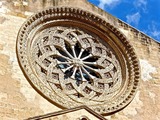
Lesson OverviewStudents explore different polygons by drawing them, measuring angles, and manipulating interactive sketches to find the angle sum for any polygon. Students also explore the angle measures in regular polygons.Key ConceptsThe angle sum in a triangle is 180°. A quadrilateral can be composed of two triangles, so the angle sum of a quadrilateral is 360°.The number of triangles that compose a polygon is two less than the number of sides (angles). The sum of the interior angles in a polygon with n sides is 180° (n – 2).Goals and Learning ObjectivesFind angle sums in polygons.Generalize to find the angle sum for any polygon.Find interior angle measures for regular polygons.

Zooming In On Figures
Unit Overview
Type of Unit: Concept; Project
Length of Unit: 18 days and 5 days for project
Prior Knowledge
Students should be able to:
Find the area of triangles and special quadrilaterals.
Use nets composed of triangles and rectangles in order to find the surface area of solids.
Find the volume of right rectangular prisms.
Solve proportions.
Lesson Flow
After an initial exploratory lesson that gets students thinking in general about geometry and its application in real-world contexts, the unit is divided into two concept development sections: the first focuses on two-dimensional (2-D) figures and measures, and the second looks at three-dimensional (3-D) figures and measures.
The first set of conceptual lessons looks at 2-D figures and area and length calculations. Students explore finding the area of polygons by deconstructing them into known figures. This exploration will lead to looking at regular polygons and deriving a general formula. The general formula for polygons leads to the formula for the area of a circle. Students will also investigate the ratio of circumference to diameter ( pi ). All of this will be applied toward looking at scale and the way that length and area are affected. All the lessons noted above will feature examples of real-world contexts.
The second set of conceptual development lessons focuses on 3-D figures and surface area and volume calculations. Students will revisit nets to arrive at a general formula for finding the surface area of any right prism. Students will extend their knowledge of area of polygons to surface area calculations as well as a general formula for the volume of any right prism. Students will explore the 3-D surface that results from a plane slicing through a rectangular prism or pyramid. Students will also explore 3-D figures composed of cubes, finding the surface area and volume by looking at 3-D views.
The unit ends with a unit examination and project presentations.

Lesson OverviewStudents will compare the formula for the area of a regular polygon to discover the formula for the area of a circle.Key ConceptsThe area of a regular polygon can be found by multiplying the apothem by half of the perimeter. If a circle is thought of as a regular polygon with many sides, the formula can be applied.For a circle, the apothem is the radius, and p is C.A=a(p2)→A=rC2→A=rπd2→A=rπ2r2→A=rπr=πr2 GoalsDerive the formula for the area of a circle.Apply the formula to find the area of circles.SWD: Consider the prerequisite skills for this lesson: understanding and applying the formula for the area of a regular polygon. Students with disabilities may need direct instruction and guided practice with this skill.Students should understand these domain-specific terms:apothemparallelogramderivationheightapproximate (estimate)scatter plotpiperimetercircumferenceIt may be helpful to preteach these terms to students with disabilities.
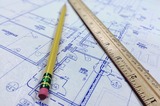
Students are introduced to real-world applications of geometry and measurement by looking at architectural plans. Students also begin to get familiar with reading architectural plans and thinking about scale.Key ConceptsSince this lesson is exploratory, all of the mathematics discussed will be informal. However, most of the mathematics that students will see in the unit is introduced in this lesson. Students look at length, area, surface area, and volume and examine how these measurements pertain to architectural plans and determining building costs. Students will also consider scale and how scale is used in architectural plans and math drawings.GoalsThink about what measurements are needed to build a building.Think about what measurements determine the cost of a building.Think about how scale is used in math drawings.SWD: Check in to ensure that students understand the meaning of domain-specific vocabulary terms such as dimensions, scale, and area. You may also need to clarify the meaning of the word contract for some students.ELL: Consider having students compile a list or resource with key vocabulary terms for this unit.

Students will measure the circumference and diameter of round things in the classroom and discover the ratio pi. They will see that the ratio of a circle's circumference to its diameter can be used to solve for the circumference when the diameter is known.Key ConceptsStudents have seen circles before, but have not analyzed the relationships between parts of a circle. The ratio of the circumference to the diameter is pi, about 3.14 or about 227. Students see that all of the objects they measure have this ratio (or close, depending on accuracy) and that the ratio is true for all circles. Students also see that the ratio can be used to solve for the circumference of a circle if the diameter (or radius) is known.GoalsMeasure round things looking for similarities.Find the ratio of the circumference to the diameter of those round things.Find a formula to find the circumference of a circle.SWD: Make sure students understand these domain-specific terms:It may be helpful to preteach these terms to students with special needs. If possible, reinforce the definitions of these terms with visual supports (diagrams).ELL: As new vocabulary is introduced, be sure to repeat it several times and to allow students to repeat after you as needed. Write the new words as they are introduced and allow enough time for ELLs to check their dictionaries or briefly consult with another student who shares the same primary language if they wish.ratiocircumferencecirclediameterscatter plot

Students find the area of regular polygons, recalling what they already know about the area of geometric shapes and generalizing a formula for any regular polygon.Key ConceptsStudents will recall what they already know about the area of geometric shapes and apply that to find the area of regular polygons. Any regular polygon can be divided into congruent isosceles triangles. If the length from the center to the midpoint of a side (the apothem) is known, the area of the triangles and the area of the polygon can be found. Students will see the similarities between the area of a polygon and derive the formula for the area of a circle.GoalsReview area of triangles, rectangles, and parallelograms.Find the area of regular polygons.Generalize an area formula for any regular polygon.ELL: This lesson offers students a rich opportunity to learn academic vocabulary. Display the new terms in writing somewhere visible in the classroom so that you can refer to them. Allow ELLs to use their bilingual dictionaries to help with understanding the terms. When possible, have ELLs discuss the terms in their language of choice with other ELLs who share the same primary language.
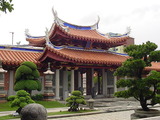
Students critique their work from the Self Check and redo the task after receiving feedback. Students then take a quiz to review the goals of the unit.Key ConceptsStudents understand how to find the area of figures such as rectangles and triangles. They have applied that knowledge to finding the area of composite figures and regular polygons. The area of regular polygons was extended to understand the area of a circle. Students also applied ratio and proportion to interpret scale drawings and redraw them at a different scale.GoalsCritique and revise student work.Apply skills learned in the unit.Understand two-dimensional measurements:Area of composite figures, including regular polygons.Area and circumference of circles.Interpret scale drawings and redraw them at a different scale.SWD: Make sure all students have the prerequisite skills for the activities in this lesson.Students should understand these domain-specific terms:composite figuresregular polygonsareacircumferencescale drawingstwo dimensionalIt may be helpful to preteach these terms to students with disabilities.ELL: As academic vocabulary is reviewed, be sure to repeat it and allow students to repeat after you as needed. Consider writing the words as they are being reviewed. Allow enough time for ELLs to check their dictionaries if they wish.

Students are given 4-5 coordinate points, that will represent the sheep. First, they are tasked with creating a fence around the sheep. The students will use the endpoints of each piece of fence to compute the slope, y-intercept, domain and equation of the line. They will then code the rover to draw their lines. Finally, the students can calculate the area/perimeter of their fence and calculate the cost to build the fence. The students will then be challenged to minimize the area, perimeter and cost of building their corral, recalculate the equations of their lines, stating their new slope, y-intercept, and domain.